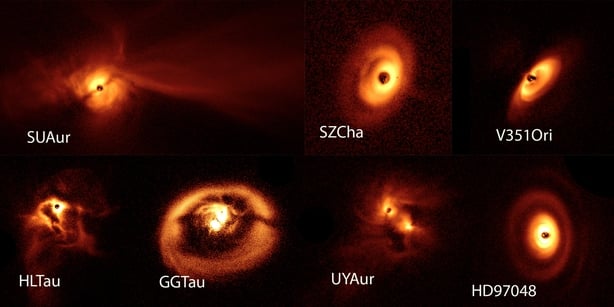Astronomers shed new light on planet formation

Astronomers are hoping that new images, captured by one of the world’s most powerful telescopes, will help them gain fresh insights into planet formation.
They are analysing images of more than 80 young stars, which were gathered using the European Southern Observatory’s Very Large Telescope (VLT) in Chile.
Experts say the material allows them to examine the “cradles of planet formation” in discs of dust and gas, that surround the stars. The researchers hope this will yield more information about our cosmic origins.
University of Galway lecturer, Dr Christian Ginski, is among the astronomers involved in the ongoing studies.
He described it as a shift in the field of research, as it allows for more detailed observation of star forming regions.
Located in the Atatcama desert in Chile, the VLT is used to search the sky for rare astronomical objects.
It is done by using infrared light, allowing for the capture of images that would be impossible to see in visible light.
The VLT is trained on particular locations, based on pre-existing wide angle surveys, to effectively zoom in on specific points of interest.
The telescope uses state of the art instrumentation, which can gather never before seen images, showing the earliest phase of planet formation.

The study takes in a total of 86 stars across three different star-forming regions of our galaxy: Taurus and Chameleon I – both around 600 light-years from Earth – and Orion, a gas-rich cloud about 1600 light-years away, that is known to be the birthplace of several stars more massive than the Sun.
Their location, several hundreds of light-years from Earth, makes them appear as tiny pinpricks in the night sky.
The study is described by Dr Ginski as one of the largest of its kind, providing astronomers with a wealth of data and a treasure trove of imagery “to help unpick the mysteries of planet formation in different regions of our galaxy”.
He is hoping the material will aid efforts to determine how different kinds of planets form, giving a clearer indication of how our own solar system has the conditions for life to emerge.
These so-called “planetary nurseries” are extremely diverse, something that helps explain the wide variation in the planets already discovered outside the solar system.
The research has been published in the Astronomy & Astrophysics journal.
The University of Galway academic says the findings have been made possible by “extreme technological advancement in telescopes and instrumentation” over the last decade.
That effort is continuing, with plans to construct an even stronger telescope to allow astronomers to delve deeper into the innermost regions of the dust and gas clouds at the centre of this research.
The new high-powered device will augment the VLT and will be known by an equally imaginative moniker of its sister device: the ELT, or Extremely Large Telescope.





